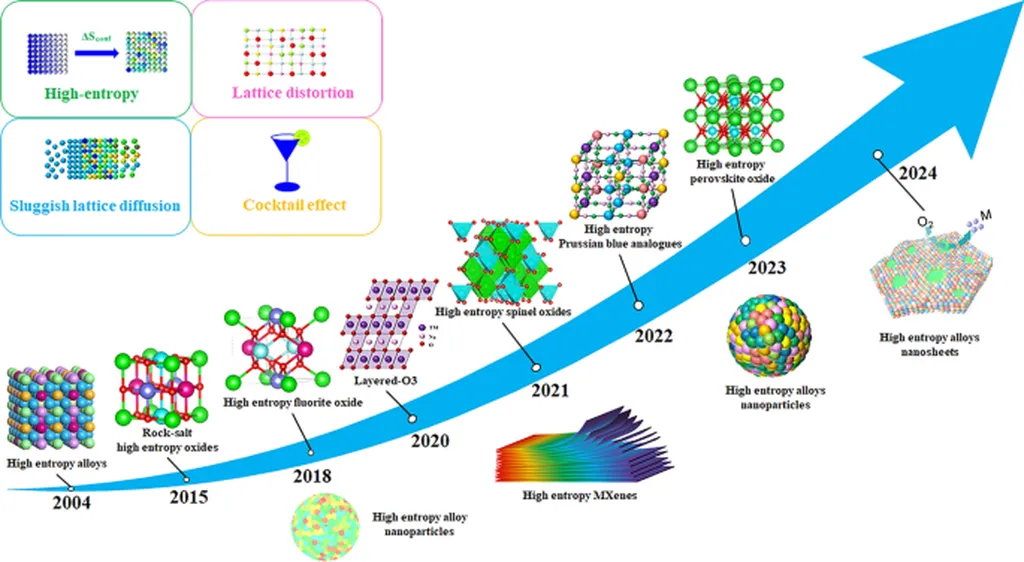In the relentless pursuit of high-energy lithium-ion batteries, researchers have long been plagued by the challenges posed by Ni-rich cathodes, particularly their rapid capacity fade and thermal instability at high voltages. However, a groundbreaking study led by Leqi Zhao from Curtin University’s Curtin Centre for Advanced Energy Materials and Technologies and the John De Laeter Centre, published in the journal *Materials Reports: Energy* (translated to English as *Materials Reports: Energy*), offers a promising solution through entropy-assisted multi-element doping.
Zhao and his team have developed a novel strategy to enhance the performance of LiNi0.8Mn0.1Co0.1O2 (NCM811) cathodes, which are highly attractive for their high energy density but have historically suffered from significant drawbacks at high charge voltages. The researchers designed and compared two distinct doping routes: bulk-like localized high-entropy doping (BHE-NCM) and surface-distributed high-entropy-zone doping (SHE-NCM). The results were striking.
“The surface entropy-doped NCM cathode demonstrated remarkable improvements in electrochemical performance,” Zhao explained. “It showed higher capacity retention under 4.5 V cycling and superior rate capability compared to both bulk-like and pristine counterparts.”
The study’s comprehensive material characterization revealed that surface-localized doping stabilizes the layered structure, reducing microcrack formation and creating a uniform dopant-rich surface region. This enhancement leads to improved thermal and electrochemical stability, effectively alleviating structural degradation and interface reactions in Ni-rich NCM cathodes.
The implications for the energy sector are substantial. As the demand for high-performance batteries continues to grow, particularly in electric vehicles and grid storage applications, the need for stable, high-voltage cathodes becomes ever more critical. Zhao’s research highlights the significance of surface entropy engineering as a promising strategy for designing cathodes that offer both improved safety and longevity.
“This work not only addresses current challenges but also paves the way for future developments in high-voltage cathode design,” Zhao added. “By focusing on the surface entropy engineering, we can potentially unlock new avenues for enhancing battery performance and stability.”
The study’s findings are a testament to the power of innovative materials science in driving advancements in energy storage technologies. As the industry continues to evolve, the insights gained from this research could shape the development of next-generation batteries, ensuring they meet the demanding requirements of a rapidly evolving energy landscape.

